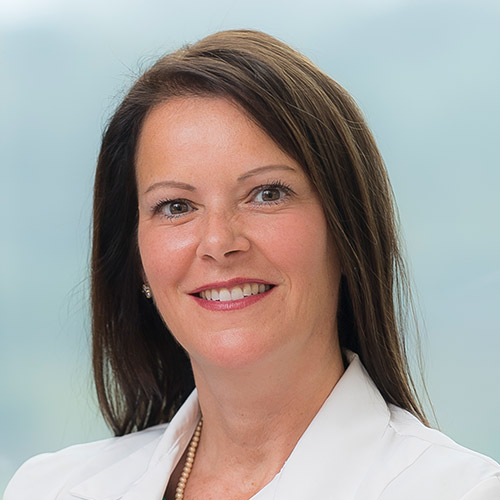-
- Find Care
-
- Visitor Information
- Find a Location
- Shuttles
- Visitor Policies
-
-
- Our Virtual Care Options
- Virtual Urgent Care
- Virtual Visits for Primary & Specialty Care
- Online Second Opinions
- Participate in Research
-
- Contact us
-
- For Innovators
- Commercialization Guide for Innovators
-
-
- Research News
- Alzheimer's Disease
- Artificial Intelligence
-
- Overview
-
- Overview
- Getting Started
- New to Mass General Brigham
- International Patient Services
- What Is Patient Gateway?
- Planning Your Visit
- Find a Doctor (opens link in new tab)
- Appointments
- Patient Resources
- Health & Wellness
- Flu, COVID-19, & RSV
- Billing & Insurance
- Financial Assistance
- Medicare and MassHealth ACOs
- Participate in Research
- Educational Resources
- Visitor Information
- Find a Location
- Shuttles
- Visitor Policies
- Find Care
-
- Overview
- Our Virtual Care Options
- Virtual Urgent Care
- Virtual Visits for Primary & Specialty Care
- Online Second Opinions
-
- Overview
- Participate in Research
-
- Overview
- About Innovation
- About
- Team
- News
- For Industry
- Venture Capital and Investments
- World Medical Innovation Forum (opens link in new tab)
- Featured Licensing Opportunities
- For Innovators
- Commercialization Guide for Innovators
- Contact us
-
- Overview
- Information for Researchers
- Compliance Office
- Research Cores
- Clinical Trials
- Advisory Services
- Featured Research
- Two Centuries of Breakthroughs
- Advances in Motion (opens link in new tab)
- Brigham on a Mission (opens link in new tab)
- Gene and Cell Therapy Institute
- Research News
- Alzheimer's Disease
- Artificial Intelligence
-
- Overview
-
- Overview
- Residency & fellowship programs
- Brigham and Women's Hospital
- Massachusetts General Hospital
- Mass Eye and Ear
- Newton-Wellesley Hospital
- Salem Hospital
- Integrated Mass General Brigham Programs
- Centers of Expertise
- Global & Community Health
- Health Policy & Management
- Healthcare Quality & Patient Safey
- Medical Education
- For trainees
- Prospective trainees
- Incoming trainees
- Current trainees
- Continuing Professional Development
Confident in Your Skin: When and How to Treat Varicose Veins

When a condition affects the appearance of your skin, you might feel hyper-aware of it and lean toward covering up, especially in the summer months. Varicose veins are one such condition, but many people have them—as many as 25 to 40 million Americans.
Varicose veins are swollen, twisted veins that appear just under the skin, usually in the legs. They’re caused by high pressure when the valves (which open and close to keep your blood flowing toward your heart) or walls of your veins become weak or damaged. This may lead your veins to stretch and bulge.
“Varicose veins may cause bothersome symptoms, swelling, or even skin discoloration. And while treating tiny spider veins may be cosmetic, treating symptomatic varicose veins is not,” says Sherry Scovell, MD, a Mass General Brigham vascular surgeon. “Luckily, there are lifestyle changes you can make to help manage any symptoms or prevent them from getting worse. And there are many office-based treatments available to get rid of varicose veins and spider veins.”
Dr. Scovell, who cares for patients at Massachusetts General Hospital, explains when to seek treatment for varicose veins. She also discusses different lifestyle changes and medical treatments to help manage them, so you can feel comfortable and confident in your skin year-round.
What do varicose veins look like?
How to get rid of varicose veins
Your provider may recommend lifestyle changes or treatment to prevent your veins from getting worse and developing more serious health issues, like chronic venous insufficiency.
Treatment for varicose veins aims to help relieve your symptoms and improve blood flow in your legs. Your provider discusses different treatment options with you to decide if lifestyle changes, medical treatment, or a combination are right for you.
Varicose veins natural treatment and lifestyle changes
Depending on your symptoms, your provider may recommend lifestyle changes to help relieve symptoms or reduce the appearance of your varicose veins. They may recommend that you:
- Avoid long periods of standing or sitting. Try to elevate your feet while sitting to lower the pressure in your veins. If you have to sit or stand for long periods of time, switch positions or get up and move around frequently, if possible.
- Elevate your legs. Putting your legs up on the couch (straight out from the hip) or lying down with your feet elevated for a few minutes several times a day helps lower the pressure in your veins.
- Exercise more often. Activities like walking or strength training help contract the muscles in your legs and help move the blood back up to your heart. Be sure to talk to your provider before starting any exercise regimen.
- Quit smoking. Smoking damages your veins and can increase your risk of developing blood clots.
- Manage your weight with lifestyle changes. Having overweight or obesity increases the pressure in your veins and puts more strain on them. Talk to your provider if you’ve tried lifestyle changes and want help losing weight. They may recommend medication.
- Wear compression stockings to improve blood flow. Your provider can prescribe them, or you can buy them over the counter.
Varicose veins medical treatment
Minimally invasive treatments and surgical procedures reduce the symptoms and appearance of your varicose veins. You may seek medical treatment if your varicose veins cause discomfort, or you may want to get rid of them for cosmetic reasons.
Varicose veins treatment options include:
- Sclerotherapy. Providers often use this treatment to get rid of small varicose veins or spider veins. A provider injects a foam or liquid into the vein, which creates irritation and scarring on the inside of the vein and causes it to close. Your body absorbs the visible vein naturally, causing it to fade.
- Endovenous ablation is one of the most common treatments for large varicose veins. After numbing the area so you don’t feel pain, a physician inserts a thin, flexible tube called a catheter into the affected vein. They use heat, laser energy, or a glue-like substance to close the vein, which redirects your blood flow to healthier veins.
- Phlebectomy. Your physician or surgeon may recommend this procedure if your varicose veins are too large for sclerotherapy, or don’t go away after minimally invasive treatments. They also may perform this treatment at the same time as ablation. During a phlebectomy, a physician numbs the area and makes a small poke over your varicose vein. They then use a hook-like device to gently remove it.
“Varicose veins are very common, but minimally invasive treatments are available, if needed,” says Dr. Scovell. “If your veins are starting to affect your quality of life, talk to your provider. We want to help you feel comfortable and at ease in your own skin.”

